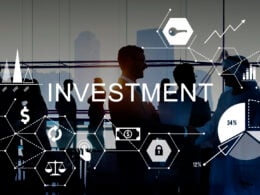Got crowdsourcing? Chances are you do—you just don’t realize it.
In fact, most people have been crowdsourcing for years. Any time you’ve participated in or led a group discussion to solve a problem, you’ve crowdsourced. Any time you’ve used consumer-generated data to make a decision, you’ve crowdsourced. It happens all the time.
As businesses have become more cognizant of both the popularity and effectiveness of crowdsourcing, new tools, platforms and strategies have emerged to utilize the practice more effectively.
For example, Mojang, the company behind the wildly successful online game Minecraft, has used crowdsourcing to build new game worlds and features. But the company’s relationship with the wider world doesn’t stop at the nearest player-managed server; Mojang reportedly used crowdsourcing to examine documents related to a lawsuit brought by two other game makers.
What’s more, the U.S. government has tapped into crowdsourcing to drive innovation. It is estimated that Challenge.gov, a hub for federal challenge competitions, has offered more than $60 million in prizes to find solutions for problems like arsenic detection and healthcare oversight.
Related: How to Successfully Engage Your Community Through Crowdfunding
How do you leverage crowdsourcing for your business?
Crowdsourcing is more than a buzzword; it’s a tool you can use to boost efficiency and creativity as well as create a more positive customer experience. Here’s how it can help:
- Skilled labor
Depending on your business, crowdsourcing can be an ideal way to efficiently fill labor gaps for basic tasks or short-term projects. For example, Amazon Mechanical Turk enables companies to source tasks such as photo moderation, transcription, verification and other tasks that require human (rather than computer) intelligence.
- Creative work
From website design to logo overhaul, crowdsourcing can be a cost-effective way for businesses to access custom design work. Leverage crowdsourcing sites like DesignHill or 99Designs, platforms that allow businesses to crowdsource design options for branding, advertisements, marketing collateral and websites.
- Fundraising
Even crowdfunding is a form of crowdsourcing. Platforms like Kickstarter, Fundable and AngelList allow artists, businesses and other entities to raise money without going through more traditional funding channels, like business loans or venture capital. Crowdfunding tends to attract startups, but it’s not just for new companies. Established businesses can use crowdfunding to expand their services, launch new products and fund programs that give back to the community.
- Idea refinement and product design
What do you do when you have an idea but no resources to execute it? Some makers, designers and inventors are turning to crowdsourcing platforms, like Quirky, to refine and strengthen their ideas in exchange for a cut of the product’s revenue. Resources like these democratize the invention process and support innovation, particularly if you’re running a small business or cash-strapped startup.
- Surveys
This simple crowdsourcing tool is a no-hassle way to improve products or services to create a better customer experience. For example, a retail store might use a survey to ask for input on what specific products customers want. Restaurant owners can survey patrons to determine a new dessert menu. Even tech businesses can run a survey to crowdsource ideas for a new product feature.
Related: Sign up to receive the StartupNation newsletter!
While crowdsourcing can be an efficient and cost-effective way to support your business goals, there are pitfalls. Submissions for design work, for example, may not have gone through any sort of quality control, so you could find yourself wading through poorly designed submissions and, in some cases, designs that have been copied from others.
Then there’s the risk of receiving an idea that is very far from what you’d intended. For instance, in 2016, a British government agency asked the internet to suggest and vote on a name for a new $287 million research ship. The winning name: R.R.S. Boaty McBoatface. The agency overrode the public’s decision and, instead, dubbed the ship R.R.S. Sir David Attenborough.
A British government agency might not be subject to budget-affecting backlash over a ship’s name, but it provides a valuable lesson about why you should always consider the potential impact of crowdsourcing-gone-wrong before launching your own crowdsourcing project or campaign.
Whether you use it to solicit reviews, launch a trial or balance your workflow, crowdsourcing can serve as a powerful tool to help you innovate, solve problems, improve efficiency and create a better customer experience.






